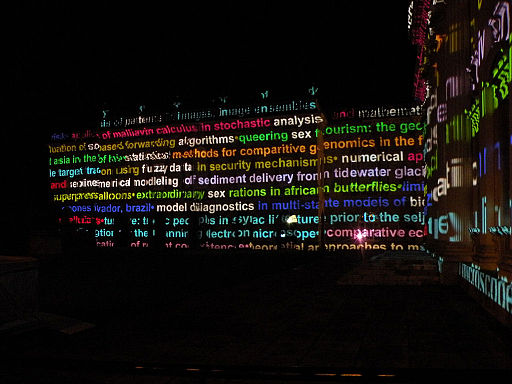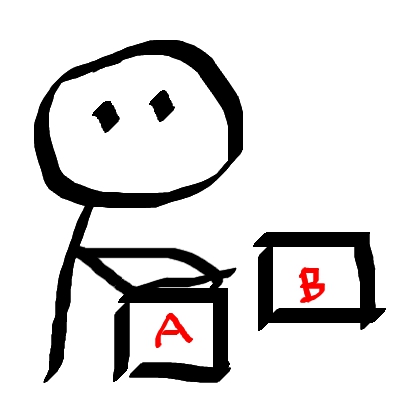Month: March 2013
Tips for Academics Engaging with Decision-Makers
The Guardian Higher Education Network with Matthew Goodwin’s 10 tips for academics preparing to work with decision-makers, yet useful in general for collaboration and making it worth everyone’s time and energy.
Goodwin’s suggestions present a slow-building, practical approach on for academics building working relationships and professional networks with policymakers and decision-makers on The Guardian’s Higher Education Network.
These are 10 excellent considerations for working with action-oriented decision-makers, and especially 3) “Prepare for a different type of conversation.” An extremely useful suggestion: think through language choices and framing when working with people short on time and attention and heavy on influence and decisions — also applicable to other interdisciplinary collaborations (where tips 1 and 2 are also pertinent!).
Researching the Invisible

Research can present some interesting challenges – and many times those challenges become unanticipated opportunities…
Early into my phase I doctoral work, I slumped into a chair in my supervisor’s corner office overlooking Glasgow’s West End. I’d been exploring sports marketing campaigns and anticipating clearly identifiable stereotypes, or more specifically: racialized and gendered representations. When I “read” the material critically, these relationships were there. Yet, specific examples seemed difficult to pin down – as though some of what I’d remembered from previous views and initial readings of these advertising campaigns was never there in the first place. Even worse, it was difficult to tell if there were any campaigns related to women athletes at all.
My then-supervisor offered rare soothing and sage words: “…sometimes what’s not there is just as important—if not more so—than what IS there.” Although I knew that many materials and social relationships are erased from historical accounts, I had not considered exploring the process in relation to how marketing narratives obscure social relationships. More importantly though, I had not seen the opportunities to explore data “in the negative.”
Suddenly, I could see a much wider and more detailed field! In considering what was not there, decision-making and social hierarchies leaped off the pages and video over which I had been poring. Thinking critically and carefully about research data offers opportunities to assess explicit and implicit social patterns.
Recognizing the opportunities inherent in researching challenges: tracking the ghosts of social relationships
Yesterday, my boss demonstrated the ways SIA digitized collections offer insights into what I’d like to call “invisible social relationships”. For example, researchers—such as those whose notebooks are included in the Field Book project—may have detailed their scientific progress in identifying species and practices conducting research in the field in certain geographic regions. Yet, these field books might not specifically speak to daily or repeating patterns, such as social relationships established between the researchers and local and state political figures in these regions.
If one reads merely the available written text, that is, he or she risks obscuring part of the story; this narrative gap becomes clear, for example, once a corresponding set of data is included: such as images of events a scientist attended. In photographic evidence and media coverage of these events, invisible social relationships that relate to the research practices begin to emerge. These could be benefactors or benefitters from research, or cultural or political allies who are unaffiliated with the research interests of the researcher, or even conspicuous absences even in the photographic material that can tell us more about the invisible social relationships and exchanges. That is to say, the research itself may have had official and unofficial agenda, so the official agenda would be demonstrated in field book records, but secondary, unofficial agenda might be “in the negative” or only determined through several steps of inference. Current researchers might be able to better capture this information and analyze these relationships, if these researchers were able to stay aware and anticipate the opportunities they might come across while doing related subject matter research in archival data.
Invisible social relationships online
Researching in the digital space offers similar challenges with benefits. Within my current research into communication within a sports fandom online, relationships are built in virtual space but they are also obscured within this space. It can be difficult to track “correspondence” between users, especially as communications may be deleted or altered. Careful observation of posts and communication via notes and tags can tell the story of much richer and more complex social relationships – patterns emerging out of what IS said that allow one to identify what is not said to highlight social relationships in the digital space.
Additionally, Invisible social relationships become apparent as one explores patterns of communication within certain virtual spaces, even when there may not be direct communication. Indeed, a second level of invisible social relationships is sometimes proposed by members of the fandom – relationships demonstrated through lack of communication, such as “silence on the line” on twitter or indirect recognition (not mentioning person A but mentioning person B with whom person A spends a great deal of time, etc).
Can you think of an example of people you know IRL (in real life), who know each other, yet whose social relationships might not be discernible from their communication strategies on-line? In what ways could future researchers trace your life and invisible social relationships that are not foregrounded in your own use of digital/social media tools and technologies? What kinds of opportunities might emerge from the challenges you have encountered if/when/in researching on- and off-line?
Image credit to: Keith Edkins [CC-BY-SA-2.0 (http://creativecommons.org/licenses/by-sa/2.0)] (via Wikimedia Commons)
Categorizing: A second but interrelated process for making knowledge

Categorizing is another process for making knowledge. As a series of steps, categorizing not only compliments making choices; it is built into the process of making choices. Perhaps we should also use the term “classifying” to start, rather than categorizing. Examples of classification abound in science, library and archival practice, and even social relationships. Can you recall the scenes in Mean Girls and Ten Things I Hate About You, in which helpful social gatekeepers identify relevant groups of high school students to a new student unfamiliar with these groupings?
Categories or classes are socially constructed—quite literally in the last example—and decisions and divisions are implicit in the process. Perhaps more importantly, the socially constructed nature of categories and classes means that they can be changed – and by people. Finally, categories and classes are built by making differences between things (items, concepts, words, people); and successfully defining difference, Hall (1997) reminds us, is an act of power but one that is part of a dialogue. Regularly reinforced and resilient power, yet not fixed (socially constructed!). Finally, classifying is essential to culture and meaning, where an order is established by relating things to one another.
So let’s review: categories and classes are divided by and bounded through socially constructed definitions and through specific language choices.
Taking that forward, we can think about the process of categorizing in relation to what we’ve discussed before about making choices. Specifically, that excluding or including things in choices creates relationships of value between what is included and excluded; these hierarchical relationships are rooted in language, which conveys meaning and is as adaptable as the social value it suggests.
As categories are established, relationships between categories are also built. Then as an individual or an institution approaches an item that requires classification, s/he/it will consider what is known from existing systems of knowledge. Thus, it takes meaning to make meaning.
Consider Bishop & Jaworski’s (2003:3) take:
“Academic study, but in fact all aspects of experience are based on acts of classification, and the building of knowledge and interpretations is very largely a process of defining boundaries between conceptual classes, and of labelling those classes and relationships between them.”
Bishop & Jaworski (2003) go on to suggest that language is the central means through which classification becomes possible; thus language itself loses neutrality, while becoming a “key ingredient in the very constitution of knowledge.”
Most recently, I have been considering the ways the categorization process might be built into the process of devising strategies for crowdsourcing. It’s been a bit chicken-or-egg in several senses: i.e. do we build the classification process into the experience or and can we even appropriately engage people without understanding the ways they might want to classify or use and access categorized information? So many things to consider – and, as needs may develop over time, how might we create a flexible and responsive but reliable means of categorizing information?
Return to the previous examples I’ve suggested for knowledge building in the digital realm, which I’ve listed again below. Can you pick some moments of categorization here?
- the collaborative process of editing on Wikipedia
- educational institutions and crowdsourcing information about unidentified women scientists, as with the Smithsonian Institution Archives http://siarchives.si.edu/blog/annual-call-help-identifying-women-scientists
- the ways fans of tv dramas on social media platforms share/reblog/retweet, discuss, and debate plot and pieces of news, then reference relevant pieces of information to create an “accepted” group understanding – such as an important event, a character’s motivations, screenwriter and actor/tresses decisions and more
- and even tagging posts on Tumblr and Twitter to first organize information and secondly, make that information more easily identified by others using searching tools and services
References:
Bishop, H. & Jaworski, A. (2003). ‘We beat ‘em’: Nationalism and the hegemony of homogeneity in the British press reportage of Germany versus England during Euro 2000. Discourse & Society, 14(3), 243-271.
Hall, S., (Ed.). (1997). Representation: Cultural representation and signifying practices. London: SAGE Publications Ltd.
